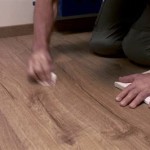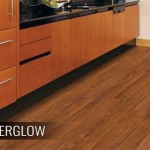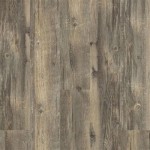Faux Stone Tile Flooring: A Comprehensive Guide
Faux stone tile flooring is a popular choice for homeowners and businesses alike due to its durability, affordability, and low maintenance. Unlike natural stone, faux stone tiles are made from materials such as porcelain, ceramic, or vinyl, and are designed to replicate the look and feel of natural stone. This article delves into the essential aspects of faux stone tile flooring, providing valuable insights for anyone considering installing it.
Benefits of Faux Stone Tile Flooring
Durability: Faux stone tiles are highly durable and can withstand heavy foot traffic, making them ideal for high-traffic areas such as kitchens, hallways, and commercial spaces.
Affordability: Compared to natural stone, faux stone tiles are significantly more affordable, making them an excellent choice for budget-conscious projects.
Low Maintenance: Faux stone tiles are low maintenance. They do not require sealing or polishing, and can be easily cleaned using a damp mop or vacuum cleaner.
Versatile Styles: Faux stone tiles are available in a wide range of styles and colors. They can replicate the look of marble, granite, sandstone, and other natural stones, providing endless design possibilities.
Easy Installation: Faux stone tiles are generally easier to install than natural stone tiles. They can be installed directly over existing flooring or subfloors, reducing the need for major renovations.
Types of Faux Stone Tile Flooring
Porcelain: Porcelain tiles are a popular choice for faux stone flooring due to their durability, low porosity, and resistance to moisture.
Ceramic: Ceramic tiles are another option for faux stone flooring. They are less durable than porcelain tiles, but still offer a cost-effective and stylish alternative.
Vinyl: Vinyl tiles are a newer type of faux stone flooring that is known for its flexibility, durability, and waterproof nature.
Considerations for Choosing Faux Stone Tile Flooring
Intended Use: Determine the intended use of the space where the flooring will be installed. High-traffic areas may require more durable tiles, while low-traffic areas may allow for more decorative options.
Style and Color: Consider the style and color that will complement the existing decor. Faux stone tiles come in a wide range of styles and colors, allowing for endless design possibilities.
Tile Size and Shape: The size and shape of the tiles can affect the overall look and feel of the space. Larger tiles create a more seamless appearance, while smaller tiles can add visual interest.
Installation Method: Determine the installation method that best suits the project. Faux stone tiles can be installed using thin-set mortar, or a dry-lay method for vinyl tiles.
Cost: Consider the budget and compare the cost of different types of faux stone tiles, as well as the cost of installation.
Conclusion
Faux stone tile flooring is an excellent choice for homeowners and businesses seeking a durable, affordable, and low-maintenance flooring solution. Its versatility in styles, colors, and installation methods make it a suitable option for both residential and commercial applications. By considering the factors discussed in this article, homeowners and business owners can make informed decisions when choosing faux stone tile flooring that will enhance their spaces for years to come.

Faux Stone Ceramictile Entryway Flooring House Tile

The Best Faux Stone Flooring S That Look Authetic

How We Refinished Our Tile Floors With Marblelife Design Improvised

Faux Stone Laminate Options

Flooring Fake Flagstones Living Room Decor Fireplace Stone Kitchen Floor Flagstone

Rustic Stone Grey Porcelain Tile Realstone Systems

Msi Monta Black 12 In X 24 Textured Slate Stone Look Floor And Wall Tile 10 Sq Ft Case Smonblk1224pp The Home Depot

8 Types And Designs Of Faux Stone Flooring Options Kolo

L And Stick Faux Stone Backsplash Clever Mosaics

The Best Faux Stone Flooring S That Look Authetic
Related Posts








